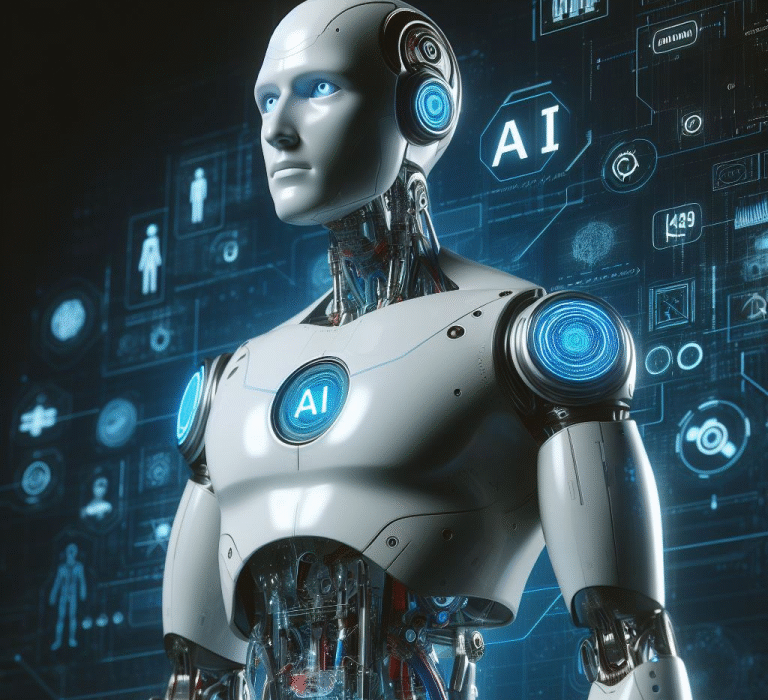In the modern data-driven world, machine learning has evolved from an academic curiosity into a central pillar of technology, influencing everything from medical diagnoses to personalized shopping recommendations. But behind the technical terms and complex mathematics lies a very human challenge: choosing the right algorithm.
If you’ve ever stood at the edge of a crowded marketplace, unsure which stall to approach, you’ve felt a version of this problem. In the world of machine learning, the “marketplace” is vast — regression models, decision trees, support vector machines, neural networks, ensemble methods — each promising something unique, each with its own strengths and flaws. The choice can be exhilarating or paralyzing, depending on how prepared you are.
And here’s the truth: no single algorithm rules them all. The right choice depends on your data, your goals, your resources, and even your tolerance for complexity. Choosing an algorithm is not a purely mechanical task; it’s an act of informed judgment.
Understanding the Nature of the Problem
Before you even glance at the names of algorithms, the most important step is understanding the nature of the problem you’re trying to solve. Every algorithm is, at its core, a mathematical tool designed to capture patterns in data — but those patterns vary dramatically depending on the type of task.
If you are predicting a continuous numerical value, you are in the realm of regression. If your goal is to sort inputs into distinct categories, you are dealing with classification. If you’re trying to group data without predefined labels, you’ve entered clustering territory. And if your system learns through interaction and feedback over time, you are treading into reinforcement learning.
The nature of your problem is the compass that points toward your algorithmic destination. Misunderstand the problem, and even the most sophisticated algorithm will fail to deliver meaningful results. This is why seasoned machine learning practitioners spend as much time talking to domain experts, cleaning data, and framing the question as they do coding the model itself.
The Dance Between Data and Algorithms
Imagine a sculptor working with different materials — clay, marble, wood. Each material has unique properties, and the artist chooses tools accordingly. In machine learning, your “material” is your data.
The size of your dataset matters enormously. Some algorithms, like deep neural networks, can shine with vast amounts of labeled data but stumble with scarcity. Others, like Naive Bayes or logistic regression, remain surprisingly effective with smaller datasets. The number of features — measurable attributes in your data — can also steer your decision. High-dimensional datasets might require algorithms with built-in feature selection or dimensionality reduction capabilities.
The quality of your data can make or break your project. Messy, noisy datasets may benefit from algorithms robust to outliers, such as decision trees or ensemble methods. On the other hand, if your data is clean, well-structured, and abundant, you might take advantage of more complex, high-capacity models.
Then there’s the question of whether your data is labeled. Supervised algorithms depend on labeled examples to learn patterns, while unsupervised methods can find hidden structures without them. Semi-supervised algorithms straddle both worlds, leveraging small amounts of labeled data alongside large unlabeled datasets.
The relationship between data and algorithms is dynamic. You might start with a small dataset and choose a simple model, only to later expand your dataset and find that more complex algorithms now become feasible.
Balancing Accuracy and Interpretability
Choosing a machine learning algorithm often forces you to weigh two sometimes conflicting desires: accuracy and interpretability. Accuracy is the raw predictive power of your model. Interpretability is your ability to explain how and why it makes predictions.
High interpretability is often crucial in domains like healthcare, finance, and law, where decisions affect lives and must be explained to regulators or stakeholders. A linear regression model may be less accurate than a deep neural network, but it offers transparency — you can see how each feature influences the outcome.
Conversely, in fields like image recognition or natural language processing, accuracy often outweighs interpretability. A convolutional neural network might feel like a black box, but if it boosts your image classification accuracy from 85% to 98%, the trade-off can be justified.
There’s a psychological aspect here, too. Trust is easier to build when you can explain a decision. Many practitioners now explore hybrid approaches: using complex models for prediction but simpler, interpretable models or post-hoc explanation methods like SHAP or LIME to understand the results.
The Role of Computational Resources
Machine learning doesn’t happen in a vacuum — it happens on hardware. The algorithm you choose must also fit within the computational resources at your disposal.
Training a deep learning model on millions of parameters requires high-performance GPUs and large memory capacity. On the other hand, algorithms like decision trees or logistic regression can run comfortably on modest hardware. The difference isn’t just about money; it’s about time. A model that takes days to train can slow experimentation, making it harder to iterate and improve.
In real-world scenarios, deployment constraints matter as much as training requirements. If you plan to deploy a model on a mobile device or an embedded system, resource-efficient algorithms or pruned models may be essential.
Generalization and the Overfitting Trap
A model can be a genius on paper and a fool in practice. This is the problem of overfitting — when a model learns the training data so well that it fails to generalize to new, unseen examples.
Some algorithms are more prone to overfitting than others. High-capacity models like deep neural networks or high-depth decision trees can easily memorize training data if not regularized properly. Simpler models, while less powerful, often generalize better on small datasets.
The battle against overfitting is fought on multiple fronts: cross-validation, regularization techniques, careful feature engineering, and gathering more representative data. The algorithm you choose should match your capacity to fight this battle. If you have little data, simpler models are often the safer bet. If you have extensive, diverse data, complex models become more viable.
When Speed Matters
Speed can influence your algorithmic choice in more ways than one. Some applications demand real-time predictions — fraud detection systems, for example, must make decisions in milliseconds. Others allow for slower processing but require faster training cycles to iterate quickly.
Algorithms like k-nearest neighbors can be slow at prediction time because they search the dataset for each query. Others, like linear models, are lightning fast once trained. Deep learning models can be optimized for rapid inference but may take hours or days to train.
The trade-off between training time and prediction time can tip the scales toward one algorithm or another, depending on whether your bottleneck is deployment latency or model development speed.
The Experimentation Mindset
No guide, however detailed, can replace the value of experimentation. In practice, the process of choosing an algorithm is iterative. You start with a clear understanding of your problem, pick a reasonable algorithm based on your data and constraints, train it, evaluate it, and then adjust your approach based on results.
Seasoned practitioners often begin with a simple, interpretable model as a baseline. From there, they incrementally test more complex models, comparing not just accuracy but also stability, interpretability, and resource demands.
This approach mirrors scientific discovery: you form a hypothesis, test it, and refine it. Choosing an algorithm is less about finding a single “perfect” choice from the start and more about navigating toward the best fit through informed trial and error.
Real-World Case Studies
In healthcare diagnostics, data is often limited, and interpretability is critical. Here, algorithms like logistic regression or random forests are popular because they balance predictive power with explainability.
In e-commerce recommendation systems, data is abundant, and accuracy directly impacts revenue. Complex models like matrix factorization, gradient boosting machines, or deep neural networks often outperform simpler alternatives.
In natural language processing tasks such as sentiment analysis, the choice can hinge on available computational resources. Transformer-based architectures like BERT achieve state-of-the-art accuracy but demand significant hardware, while simpler recurrent networks or even bag-of-words models may suffice for smaller-scale projects.
The Evolving Landscape of Algorithm Choice
The machine learning field is constantly evolving. Algorithms that were cutting-edge a decade ago are now considered basic, while entirely new paradigms emerge. Automated machine learning (AutoML) systems are beginning to shoulder the burden of algorithm selection and hyperparameter tuning, freeing practitioners to focus more on framing problems and interpreting results.
Yet even as automation grows, the human element remains irreplaceable. AutoML can suggest a high-performing model, but it cannot understand the ethical implications of using it in a given context, nor can it fully grasp the subtle domain-specific constraints that guide responsible decision-making.
Ethical and Social Dimensions
Choosing an algorithm is not just a technical decision; it’s an ethical one. The wrong choice can amplify biases in your data, leading to unfair or harmful outcomes. Algorithms do not create bias from nothing — they reflect and sometimes magnify the biases present in their training data.
This is why fairness-aware machine learning is now a critical consideration. Some algorithms lend themselves more readily to bias detection and mitigation, while others make it difficult to trace the sources of unfairness. Your choice should account not just for accuracy and speed but also for the societal impact of the model’s decisions.
The Art and Science of the Final Decision
When all is said and done, choosing the right machine learning algorithm is as much art as science. It requires an analytical understanding of mathematics, statistics, and computer science, but also creativity, intuition, and empathy for the people who will be affected by the model’s outputs.
It is a journey of balancing constraints — data quality, interpretability, computational resources, accuracy, ethical considerations — and finding the algorithmic sweet spot that meets your unique needs.
Machine learning may be built on numbers, but the act of choosing the right algorithm is deeply human. It is about making informed decisions under uncertainty, guided by both evidence and experience, and always with an eye toward the broader consequences of your choice.






